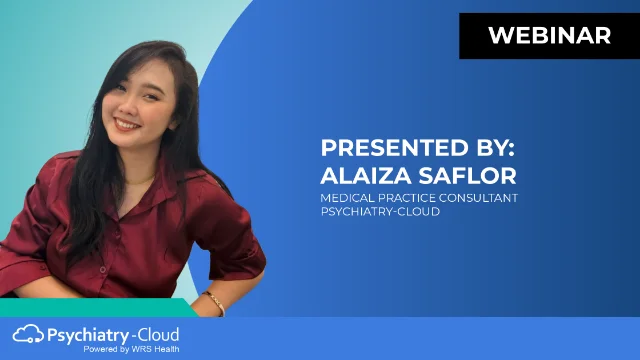In the United States, the Latino community continues to grow, yet the number of psychiatrists and psychologists who speak Spanish is decreasing.
In 44 out of 50 states, the percentage of facilities offering Spanish-language mental health care services decreased between 2014 and 2019, according to a 2022 study. To be precise, the proportion of facilities in the U.S. offering mental health treatment in Spanish declined by 17.8%. This represents a loss of 1,163 Spanish-speaking mental health facilities, as stated by the American Psychiatric Association (APA).
Let’s take Texas as an example. Even though in this state 40% of the population is Hispanic, “only about 15% of more than 6,000 recently surveyed mental health providers identified as Latinx or Hispanic”, stated Medical Xpress.
In the United States there are about 5,000 Hispanic psychologists. This only represents 5% of the country’s psychologists, according to Census data published by the APA. However, 19% of the country’s population is Hispanic.
How can mental health providers help fill this void? What alliances can specialists make as psychiatrists, psychologists and behavioral health professionals to meet the needs of the Latino community?
With these statistics, it is clear there is a significant gap in care that needs to be filled. As the 2022 study shared by Psychiatry Online concludes: “Promoting mental health service delivery in Spanish is critical for reducing barriers to treatment and ensuring health equity across populations.”
Let’s dive into this issue and explore why offering culturally and linguistically competent mental health care is key, not only to tackle this particular issue, but also to ensure your behavioral health practice promotes clinical excellence and offers outstanding patient care to all populations.
Bilingual therapy: covering this growing demand
As a response to the mental health care needs by the Latino community, Therapy Works was founded. It is a mental health counseling company in North Texas with six clinics that provides bilingual and bicultural services for Latino people.
The founder of Therapy Works, Ana Marcela Rodríguez, sought to make sure everyone in her team was fully bilingual and bicultural. She is surrounded by almost 30 Latinx therapists. They are first, second and third-generation immigrants with family roots in different countries such as: Mexico, Puerto Rico, Peru, Colombia, Guatemala, Cuba and others. They serve about 1,500 clients.
An article by Medical Xpress explained: “The demand for bilingual therapy is expected to keep growing as the population of second-and third-generation children of Hispanic immigrants does, too. Therapy Works has experienced an increase of about 35% in younger clients: children, and teenagers, seeking therapy for anxiety and depression”.
As the Latino population keeps growing, there is still room for more mental health providers to offer Spanish-language therapy and meet the mental health care needs of this community.
Why immigrants need access to behavioral health professionals
- PTSD
- Depression
- Stress
Moreover, “US citizen children of undocumented parents are also at risk of anxiety given their parents’ tenuous legal status and the fear of deportation”.
- Childhood substance abuse
- Conduct disorders
- Increase in school dropout
Latino immigrants in the United States face challenges of integration and marginalization that present a need for systematic screening for trauma and related psychiatric disorders.
Beyond simple translation: Latino patient needs
Being able to express how you feel, describe in depth your emotions with a wide vocabulary, and feel culturally understood by your therapist are key aspects of having proper mental health care. These are one of the reasons why Latino patients in the United States would prefer therapists that speak their native language.
The importance of Spanish-language therapy goes beyond simple translation, as explained by Manuel Zamarripa, president of the National Latinx Psychological Association: “When it comes to expressing emotional distress or emotional elation, we gravitate towards the Spanish language,” said Zamarripa. “When we are not able to do that because the person across from us can’t understand, that’s incredibly significant”.
According to the APA, “Latinos are a growing academic, political and financial force in the US. One-in-four newborns is Latino”. As stated by the APA, “by force of numbers alone, the kinds of adults these young Latinos become will help shape the kind of society America becomes in the 21st century”.
Behavioral health professionals should consider that “a future filled with quality treatment, prevention and early intervention for Latinos” is needed.
In addition to treatment, Zamarripa stresses the importance of Spanish language and cultural competency training programs. Increasing Hispanic-serving institutions and diversity commitments are indicators of moving in the right direction. However, Zamarripa adds: “More progress needs to be made toward equity and understanding”.
“Telepsychiatry is a promising approach that may mitigate access barriers on a national scale”. However, “even in the midst of burgeoning interest in telehealth, racial-ethnic disparities persist”, the 2022 study points out.
Offering culturally and linguistically competent care
As stated by the National Alliance on Mental Illness (NAMI), “for mental health providers working with Hispanic/Latinx clients or patients, exploring cultural identity may offer important information to tailor their mental health treatment”.
In a behavioral health professional, “cultural humility is necessary to provide quality care. This refers to the ability to recognize that culture plays a large role in a person’s health and well-being and may sometimes affect the provider’s ability to best serve their patient’s needs”.
- Culturally and linguistically appropriate treatment
- Workforce development to sustain a culturally and linguistically competent mental health workforce
- Community partnerships, outreach and engagement
- Look directly at your patient when speaking — do not communicate only with the interpreter.
- Ask short questions and communicate short messages to promote effective interpretation and reduce errors.
- Allow enough time for the interpreter to finish the statement and for the patient to ask questions when they need to.
- If language barriers are negatively affecting the mental health treatment, consider scheduling more frequent or longer appointments to allow adequate time for the use of the interpreter.
As the 2022 study shared by Psychiatry Online concludes, “culturally responsive health care, which incorporates an understanding of culture and language into clinical mental health practice, may be one strategy to increase treatment uptake in Hispanic populations”.
Why is language so important? “Spanish-language concordance between a provider and patient improves privacy, trust, and communication. The ways in which Spanish-speaking clients of mental health services express emotions and describe symptoms also vary depending on their own level of comfort with English and on the Spanish fluency of the provider”, they explain.
Making alliances with organizations that help the Latino community
There are at least 8 mental health organizations you can make alliances with, as a mental health provider, to meet the needs of the Latino patients that come to your practice. These are:
- NAMI’s Compartiendo Esperanza: A bilingual 90-minute presentation to increase mental health awareness in Latino communities. They provide guidance on how to talk about mental health and decrease stigma.
- The American Society of Hispanic Psychiatry: Their members include psychiatrists, psychologists, and other mental health workers. This association works to advocate for policies to eliminate health disparities in minority populations. They offer a “Find a Physician” feature to look for a LatinX provider.
- Therapy for LatinX: A database of therapists who either identify as LatinX or have worked closely with LatinX communities and understands their needs.
- Mental Health America: They provide general mental health Spanish-speaking resources, including a list of materials and screening tools.
- Each Mind Matters: A California’s Mental Health Movement. Its website provides information and statistics for LatinX populations, as well as Spanish-language factsheets and resources.
- National Alliance for Hispanic Health: originally founded in 1973 as the Coalition of Spanish Speaking Mental Health Organizations (COSSMHO), now provides services to more than 15 million LatinX people throughout the U.S
- LULAC’s Latinos Living Healthy (LLH) initiative: it aims to reach LatinX people across the United States and Puerto Rico, increasing awareness by distributing information and resources.
- The U.S. Department of Health and Human Services’ Office of Minority Health: serves to improve the health of racial and ethnic minority populations through the creation of health policies and programs that will work to eliminate health disparities. Its website provides information and links to other mental health resources in several languages, including Spanish.
Stigmas and barriers around seeking mental health therapy
An issue that hinders the access to proper mental health care is also the stigma Latinos have towards having a mental illness or receiving care. “Seeking mental health therapy has been a taboo topic among Hispanics for generations, with a historic tendency for people to believe there’s no need for counseling or that there is no time for it”, said Rodríguez, founder of Therapy Works.
As an example, according to the National Alliance on Mental Health (NAMI), 35.1% of Hispanic/Latinx adults with mental illness receive treatment each year compared to the U.S. average of 46.2%. This is due to many unique barriers to care.
“Cultural and political barriers can stand in the way of Hispanic people seeking care. Gender norms, family dynamics and fear of institutions because of immigration status can also prevent people from accessing mental health care”, said Richard Galindo, a Hispanic therapist at Chicanos Por La Causa in a news article.
An issue Latinos also face is discrimination due to their accent or if they do not speak English well. They may be seen as less intelligent, which can impact on their job opportunities, and contribute to isolation and depression, as explained in a Hispanic Heritage Month article by Very Well Mind.
Wrapping it up…
With the Latino population on the rise and the number of Spanish-speaking mental health facilities decreasing, there is a significant gap in care that needs to be filled. As a response, psychiatrists, psychologists and behavioral health professionals can take action to address this growing demand.
- Offering culturally and linguistically competent care
- Promoting mental health service delivery in Spanish
- Making alliances with organizations that serve the Latino community
This is not only essential for the well-being of the Latino community, but also for the future of our society, as Latinos continue to grow as an academic, political, and financial force in the United States.
Through Psychiatry-Cloud, mental health providers can reach more Spanish-speaking patients with features like telehealth. Our platform ensures clinical excellence and outstanding patient care for all populations and especially for the Latino community, in obvious need of Spanish-speaking psychiatrists and psychologists.










